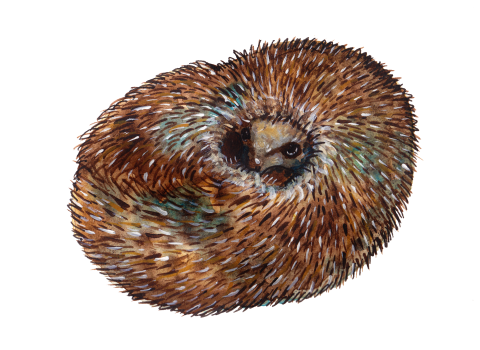
Ceri Thomas
About hedgehogs
Hedgehogs are Britain's only prickly mammal and one of few true hibernators. From November to March when their insect food is in short supply, hedgehogs hunker down in nests made from layered leaves. They emerge in the spring, hungry and looking for mates. Find out more about their ecology below.
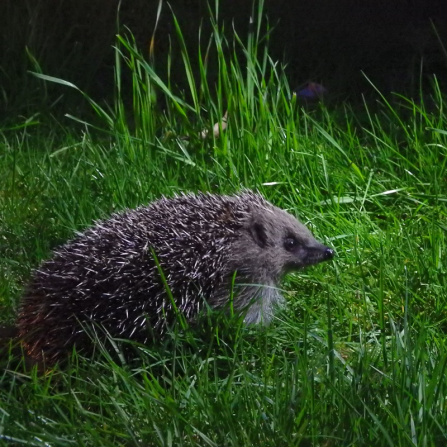
Credit Deborah Wright
Hedgehog type animals are thought to date back to 56-34 million years ago in the Eocene, when the earth began to cool and grasses appeared. However, fossilised remains of a spiny mammal were recently found in Spain, dating back to 125 million years ago, suggesting a much longer history.

Credit Deborah Wright
Hedgehogs are mammals, in the order Eulipotyphla, the family Erinaceidae, and the subfamily Erinaceinae. In the UK, they are most closely related to moles and shrews. They are also related to shrew-like moles, mole-like shrews, desmans and moonrats, found elsewhere in the world.
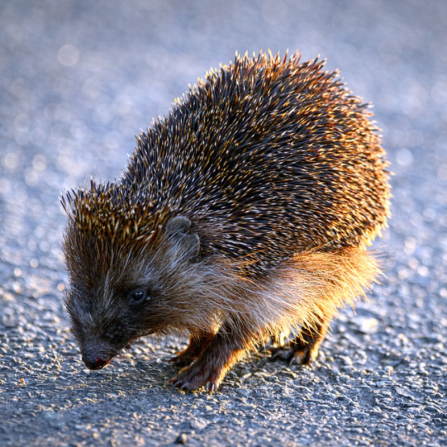
Credit hedera.baltica from Wrocław, Poland [CC BY-SA 2.0 (https://creativecommons.org/licenses/by-sa/2.0)]
There are 17 species of hedgehogs worldwide. Our single UK species is the West-European hedgehog Erinaceus europaeus. It is in the same group of hedgehogs as the Northern White-Breasted hedgehog (pictured) found in Eastern Europe. Both have short ears and a large big toe on the hind feet.
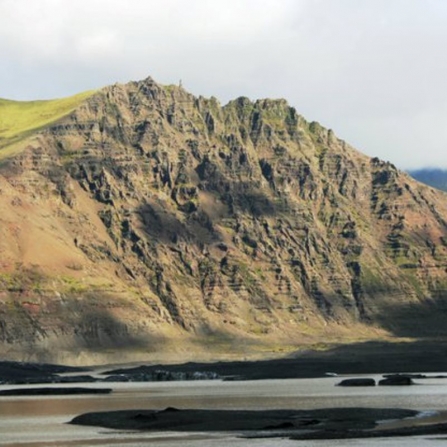
Credit Deborah Wright
Our hedgehog is widely distributed across the UK. It is sometimes not found in mountainous, coniferous or highly urbanised habitat. These habitats are thought unsuitable because they do not provide leaves for hedgehogs to make their hibernacula, or hibernation nests. Hedgehogs will sometimes make use of rabbit burrows in more exposed areas and use pine needles for nesting material though.
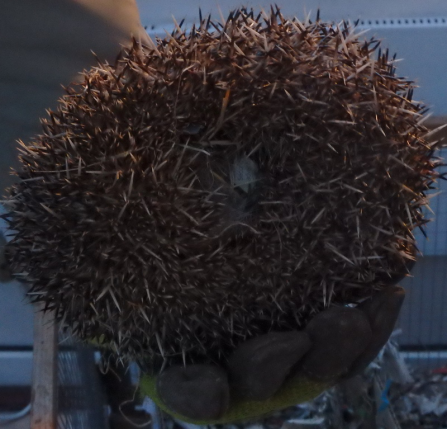
Credit Deborah Wright
Some hedgehogs have occasional white spines, some are "blond" or leucistic caused by a rare recessive gene, some are true albinos, and some are white with black eyes and nose. These variations are generally rare except on North Ronaldsay and Alderney where 25% of the population is thought to be blond.

Credit Deborah Wright
Adult hedgehogs have up to 7000 spines (20 x 2mm) used as a defence against predators and falls. Spines are attached to individual muscles and are embedded at different angles, creating a formidable force when raised. Hedgehogs have a skirt of skin bounded by the orbicularis muscle that acts like a drawstring pulling the hedgehog into a tight ball.

Credit Deborah Wright
Although nocturnal and often missed, hedgehogs leave signs of their presence e.g. footprints and droppings. Droppings are often dark, little finger sized and shine with insect remnants. Hedgehogs eat predominantly beetles, caterpillars and earthworms. They also sometimes eat slugs and snails, eggs, carrion, other mammals and chicks.
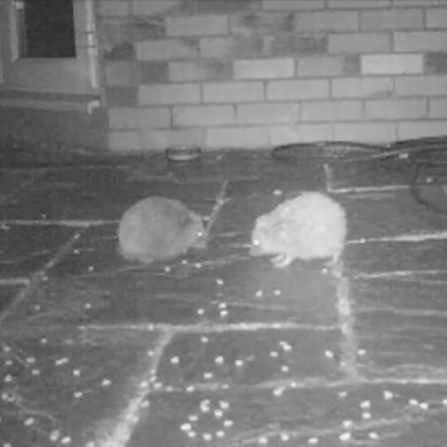
Credit Keith Norman
Sexual maturity occurs at 9-12 months. Courtship is often noticeable in May with the male circling the female whilst she makes noises and head butts his flanks. The sexes can be hard to tell apart, with the size difference of males being larger less obvious as they get older. Both are promiscuous and the male does not look after any resulting hoglets.
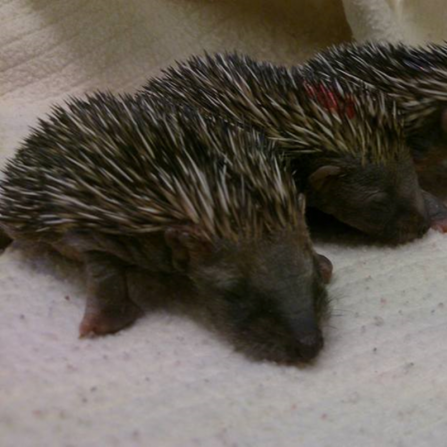
Credit Sally Marjoram
After 4 weeks in the womb, baby hedgehogs or hoglets are born with their eyes and ears sealed and spines underneath skin. After another 4 weeks suckling in the nest they go out foraging with their mother before becoming independent and solitary at 6-8 weeks. 20% die in the nest but adults live for an average of 2 years, sometimes up to 5.
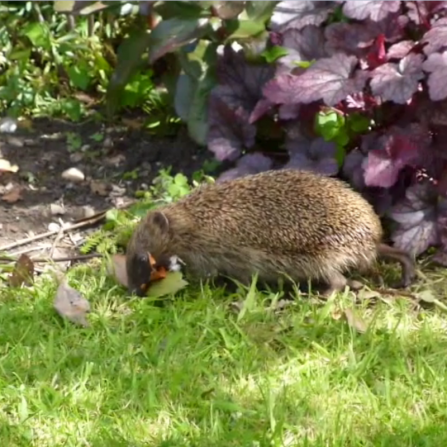
Credit Christine Chatland
Hedgehogs make three types of nest. Day nests can just be made at the base of long grass as a summer shelter. Hibernation nests are made of leaves for the winter e.g. cherry, oak, lime, under a structure to keep them together e.g. hedge, shed. Nursery nests are made by females or sows to nurse their litters in, and are often made of a mix of materials.
